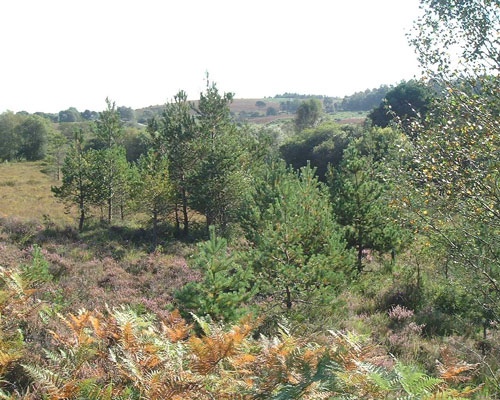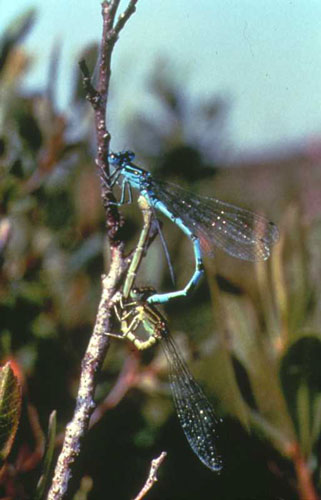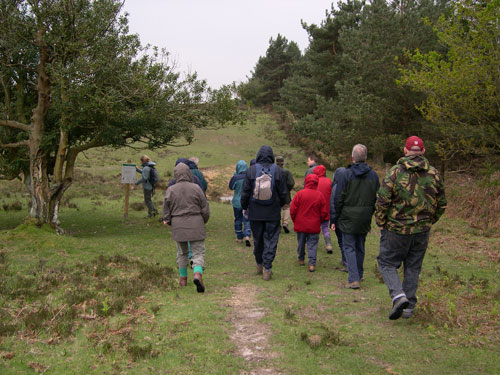| Country |
England,
UK |
| Natura
2000 site location |
Hampshire,
southeast UK |
| Nearest
urban settlements |
Southampton
and Bournemouth |
| Natura
2000 site name |
The
New Forest SAC |
| Unofficial
but locally accepted name for the site/s |
New
Forest |
| Natura
2000 site number |
UK9011031
(pSCI 0012557) |
| Size
of site (hectares) |
29,000
ha |
| Site
classification / description |
Natura
2000 site, Special Area of Conservation, Special Protection Area, Ramsar
site, complex mosaic of habitats, SSSI, NNR. |
| Key
Species types |
Dartford
warbler (Sylvia undata), nightjar (Caprimulgus europaeus) woodlark (Lullula
arborea) ,honey buzzard (Pernis apivorus) southern damselfly (Coenagrion
mercuriale),stag beetle (Lucanus cervus), great crested newt (Triturus cristatus),
Bechstein's bat (Myotis bechsteinii), barbastelle bat (Barbastella barbastellus),
over-wintering hen harrier (Circus cyaneus); breeding waders e.g. lapwing
(Vanellus vanellus) , redshank (Tringa tetanus), curlew (Numenius arquata)
and snipe (Gallinago gallinago), other specialist invertebrates such as
fairy shrimp (Chirocephalus diaphanous) and tadpole shrimp (Triops cancriformis). |
| |
| Key
Habitats |
Wet
and dry heaths, valley mires including alkaline fens, transition mires,
quaking bogs, and Rhynchosporion habitat. Wet and dry acid grassland, wood
pasture, beech woodland, oak woodland , riverine woodland (alluvial forest)
and bog woodland, rivers, streams, oligotrophic and temporary ponds and
Inclosure woodland managed for silviculture. |
| |
| Key
management issues |
The
quality of the habitats of the New Forest, and the rich diversity of species
which they support, is dependent upon the management activities of the various
owners and occupiers. Of fundamental importance is the persistence of a
pastoral economy based on the existence of Rights of Common. The commoners'
stock, mainly cattle and ponies, roam freely over extensive areas of the
New Forest, playing a vital role in keeping open habitats free of scrub
and controlling the more aggressive species such as bracken (Pteridium aquilinum)
and purple-moor grass (Molinia caerulea) ,and maintaining the richness and
variety of heathland and wood pasture habitats. This is complemented by
the annual heathland burning and cutting programmes which ensure that at
any one time there is an extensive range of structurally diverse habitats
available for plants and animals to utilise. The SAC Management plan was
prepared in 2001. The UK government is obliged to take steps to avoid any
significant pollution, disturbance or deterioration of the habitats on this
site and through its Agencies works closely with owners and occupiers to
conserve, enhance and maintain the special habitats. |
| Organising
at least one Green Days event per year |
At
least one Green Day event will be planned for each year of the project and
around 15 - 20 other events (guided walks, site visits, talks and presentations)
will be held in 2005 to promote the work of the LIFE3 project and Natura
2000. |
| Promoting
Natura 2000 at the local level |
Our
project aims to raise awareness and promote the LIFE3 project and Natura
2000 at a local and regional level. Our project publicity material (leaflets,
posters, newsletters, exhibition/display panels) contains information on
Natura 2000 and is distributed to a local audience and at major regional
events. Throughout the year, Natura 2000 is promoted at local project guided
walks, talks and events held in the New Forest. Presentations are made each
year to groups and forums at local and regional levels - these aim to promote
the project and emphasise the importance of Natura 2000. Promotion is also
carried out to our stakeholder group - the Water Basin Management Forum
(WBMF) - that was set up as part of the LIFE3 project. In addition, the
LIFE3 project website contains a designated section on Natura 2000 which
raises awareness on a local and wider European level. |
| Site
twinning / networking activities |
The
Forestry Commission, in partnership with Fontainbleu, France, runs an INTERREG
funded project called PROGRESS (Promotion and Guidance for Recreation on
Ecologically Sensitive Sites). It is based around two major forests, the
New Forest in the UK and Fontainbleau Forest in France. The knowledge, practices
and systems used in each forest for managing recreation are shared through
a programme of staff exchanges, including foresters, rangers, keepers and
New Forest volunteers. The findings and lessons learned through the project
are also disseminated via the project Newsletter which is produced every
four months and distributed within the UK and France. At the end of the
project, all the lessons learned will be compiled into a manual as a guide
for other European land managers. In addition, an international conference
will be held to share the project knowledge gained through presentations
and papers. |
| Involving
local stakeholders in the management planning process - creating a local
area partnership |
The
management plan for the site actively involves the Water Basin Management
Forum stakeholder group that was set up as part of the LIFE3 project. The
primary landowner of the New Forest, the Forestry Commission also run a
Forest Design Plan Forum and Open Forest Advisory Committee for the site
which consult over management of the Inclosure Woodlands and open forest
respectively. The Forestry Commission will be consulting over the review
of their part of the SAC management plan in 2006/7. Every landowner within
the SAC has their own management plan which forms part of the overall SAC
management plan. |
| Branding
Natura 2000 |
The
LIFE3 partnership produce site signs that are erected in areas of the New
Forest where LIFE3 practical restoration work is being carried out. All
site signs and interpretation boards produced by the LIFE3 partnership carry
the Natura 2000 logo and an additional explanatory paragraph. |
| Agreeing
to become an NNi ambassador |
Yes.
Project partners would need to be consulted to obtain technical information
that could be passed on through the Natura 2000 network. The New Forest
LIFE3 project is keen to share skills, experience and lessons learnt with
a wide range of land managers throughout the UK and Europe. Jonathan Mycock
(Hampshire County Council, Winchester, Hampshire, UK) jonathan.mycock(a)hants.gov.uk
is an NNi Ambassador. |

























